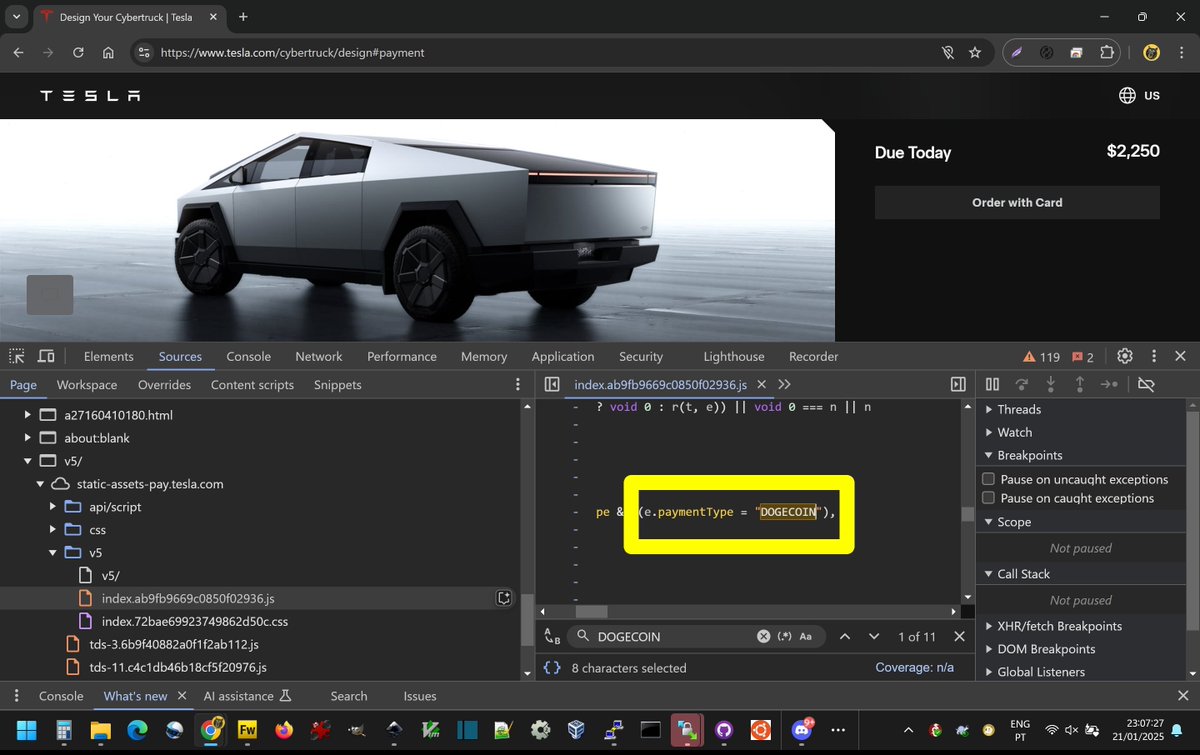A Batalha Final do Dogecoin — Análise Profunda
Há muito considerado como a principal moeda meme no mercado, Dogecoin viu um aumento de preço no final de 2024 devido ao efeito Trump e Musk durante o período eleitoral dos Estados Unidos, seguido por uma correção significativa com uma queda superior a 60%. Essa tendência foi consistente com a queda geral no setor de moedas meme, indicando que seu momento de curto prazo é principalmente impulsionado pelo sentimento de mercado.
Em relação à adoção institucional, a Grayscale lançou o Fundo de Confiança Dogecoin em janeiro de 2025 (com uma taxa de gestão de 2,5%), que está disponível apenas para investidores credenciados. Embora seu tamanho permaneça pequeno (aproximadamente US$ 2 milhões de AUM), sua importância supera os números, marcando a inclusão formal do $DOGE na classe de ativos investíveis para instituições. Esse movimento é considerado um passo crucial na transição do Dogecoin de um ativo impulsionado por memes para um produto de investimento institucional.
Enquanto isso, a Bitwise liderou a iniciativa de buscar um ETF Dogecoin, submetendo um pedido à SEC. Se aprovado, poderia aumentar ainda mais a liquidez de mercado do Dogecoin. No entanto, até agora, nenhum ETF desse tipo foi aprovado, e os desenvolvimentos futuros dependerão de mudanças regulatórias.
$DOGE possui tanto valor especulativo de curto prazo quanto potencial de aplicação de longo prazo, com seu preço historicamente exibindo uma forte correlação com Elon Musk. É importante destacar que X está explorando ativamente integrações de sistemas de pagamento, e se $DOGE for incorporado na infraestrutura de pagamento da X, este seria o catalisador de mercado mais significativo desde 2021.
O futuro trajeto do Dogecoin dependerá de três variáveis-chave: aplicações de pagamento, investimento institucional e tendências de distribuição de tokens.
Atualmente, o $DOGE continua sendo principalmente um ativo especulativo impulsionado pela comunidade. No entanto, se X ou a Tesla expandir suas aplicações de pagamento, nova demanda de mercado poderá surgir. Além disso, o progresso das aplicações de ETF e das políticas regulatórias influenciará os fluxos de capital institucional, potencialmente remodelando a estrutura de mercado do DOGE. Este artigo avaliará a posição atual do $DOGE e as oportunidades futuras por meio de uma revisão histórica, economia narrativa e uma análise detalhada da distribuição de tokens.
Revisão Histórica
$DOGE foi criado em 2013 por Billy Markus e Jackson Palmer como uma visão satírica da bolha do mercado de criptomoedas. No entanto, inesperadamente evoluiu para a moeda meme com maior capitalização de mercado do mundo.
O desenvolvimento histórico do $DOGE pode ser dividido em várias fases-chave:
2013 - 2017: Crescimento impulsionado pela comunidade e cultura de caridade
- A comunidade do Reddit impulsionou o $DOGE para uma moeda popular de gorjetas na internet.
- Em 2014, patrocinou a participação da equipe jamaicana de bobsled nos Jogos Olímpicos de Inverno.
- Em 2015, Elon Musk expressou publicamente interesse em $DOGE pela primeira vez.
2018 - 2020: Baixa Liquidez e Marginalização de Mercado
- $DOGE permaneceu a um preço baixo por um longo período, sem uma narrativa forte impulsionando a atividade de mercado.
- A liquidez foi principalmente impulsionada pela negociação da comunidade, com pouca ou nenhuma atenção institucional.
2021 - 2022: O Efeito Elon Musk e o Boom da Moeda Meme
- A saga da GameStop (GME) e os tweets de Musk impulsionaram um aumento de 100x no $DOGE em quatro meses.
- O limite de mercado do $DOGE excedeu brevemente $90 bilhões, classificando-se entre as três principais criptomoedas.
- Principais exchanges, incluindo Robinhood, Coinbase, Binance e OKX, listaram $DOGE.
2023 - 2025: Entrada de Capital Institucional e Adoção de Pagamentos
- A aquisição do Twitter por Elon Musk (agora X) estimulou um sentimento otimista para $DOGE.
- A Tesla começou a aceitar $DOGE como forma de pagamento para produtos selecionados.
- A eleição de Trump como presidente dos EUA mudou sua postura para uma abordagem mais amigável às criptomoedas, potencialmente impulsionando políticas relacionadas.
- Rumores sobre o código do X Money e desenvolvimentos relacionados alimentaram especulações sobre $DOGE ser integrado aos pagamentos em criptomoedas.
- A Grayscale lançou um fundo fiduciário $DOGE, enquanto a Bitwise enviou uma aplicação de ETF $DOGE.
Economia Narrativa
O valor de mercado do $DOGE é primariamente impulsionado por narrativas. Essas narrativas moldam o desenvolvimento futuro do $DOGE e suas fontes de liquidez, ao mesmo tempo que influenciam os padrões de rotação de capital entre instituições e investidores varejistas. As principais narrativas que atualmente impactam o mercado incluem:
- Domínio da moeda meme e mecanismo de POW
- O efeito Elon Musk e a associação do $DOGE com ele
- Narrativa de adoção de pagamentos (Tesla, X Money)
- Investimento institucional e aplicações de ETF
Dominância da Moeda Meme e Mecanismo POW
Dominância da Moeda Meme \
Desde a sua criação, o $DOGE foi inicialmente impulsionado pela comunidade do Reddit como uma moeda de gorjetas na internet. No entanto, após o último ciclo de alta, sua associação com Elon Musk consolidou seu status como a maior moeda meme em termos de capitalização de mercado. Embora permaneça influenciado por tendências de mercado mais amplas, manteve correlações de longo prazo com outras moedas meme e até catalisou a criação de novas.
Por exemplo, a ascensão de $SHIB, $FLOKI e a outrora popular $BABYDOGE em 2021 pode ser atribuída ao sucesso de $DOGE. Notavelmente, ao contrário de outros "tokens" de meme que existem em blockchains compatíveis ou autônomos, $DOGE é a maior "moeda" de meme de Prova de Trabalho (POW) (perdendo apenas para $BTC), com $LTC em terceiro lugar.
Mecanismo POW
Um ditado comum do ciclo anterior era "Bitcoin é ouro, Litecoin é prata e Dogecoin é cobre." Isso ocorre porque os três compartilham uma arquitetura técnica semelhante baseada em POW. No entanto, a diferença chave está em seus mecanismos de oferta - enquanto Bitcoin e Litecoin têm um fornecimento máximo limitado, $DOGE segue um modelo inflacionário, emitindo 5 bilhões de novas moedas anualmente. A tabela abaixo fornece uma análise comparativa desses três ativos:

Em 2014, o poder de mineração do $LTC atingiu 600GH/s, enquanto o $DOGE tinha menos de 40GH/s. Isso tornou a rede do Dogecoin altamente vulnerável a ataques, levando a explorações de pools de mineração e ao hackeamento da Carteira Dogecoin. Como resultado, o preço do $DOGE despencou 95,26%.
Para aumentar a segurança, o fundador do LTC, Charles Lee, propôs que a comunidade do $DOGE adotasse a mineração mesclada (AuxPoW) com o $LTC. Essa proposta gerou intenso debate, mas, no final, a comunidade decidiu integrar-se ao Litecoin.
Ao compartilhar o poder de mineração, a taxa de hash da rede $DOGE aumentou constantemente, tornando os ataques de 51% significativamente mais caros e melhorando a segurança da blockchain. Além disso, os mineradores que receberam recompensas em $DOGE as viram como uma fonte importante de renda - muitos dos primeiros mineradores em grande escala de $LTC também eram grandes detentores de $DOGE. Em retrospecto, a decisão de implementar a mineração mesclada provou ser uma estratégia vantajosa para ambas as redes.
O Efeito Elon Musk e a Correlação do $DOGE
É amplamente conhecido que Elon Musk foi o principal catalisador por trás do grande rally do $DOGE em 2021. Ao longo do tempo, a influência de mercado do $DOGE tornou-se cada vez mais entrelaçada com Musk. Um dos momentos mais notáveis foi em 28 de abril de 2021, quando Musk anunciou que estaria aparecendo no Saturday Night Live (SNL), que estava programado para ir ao ar em 8 de maio de 2021.
Durante a transmissão ao vivo, quando perguntado, “O que é Dogecoin?”, Musk respondeu brincando:
"É uma fraude."
Logo em seguida, o $DOGE caiu 30% de sua alta histórica de $0.74. Ao mesmo tempo, Barry Silbert, então CEO da Grayscale, revelou publicamente que havia feito short de $DOGE na FTX com uma posição de $1 milhão. De forma irônica, o $DOGE mais tarde se tornou um dos ativos incluídos nos produtos de confiança da Grayscale, demonstrando uma mudança dramática no sentimento institucional em relação à moeda.
Mais recentemente, Musk tem apoiado ativamente Donald Trump na última eleição presidencial dos EUA. Em 2023, Musk até propôs a criação de um departamento de eficiência governamental, abreviado como D.O.G.E., com o objetivo de reduzir o desperdício governamental e melhorar a eficiência. O mercado inicialmente associou essa proposta ao movimento de preço do $DOGE e, no início de janeiro de 2024, o site oficial do X (anteriormente Twitter) brevemente mudou seu logotipo para o emblema Dogecoin.
No entanto, revisar as tendências históricas revela uma mudança fundamental:
O mercado não reage mais apenas aos tweets de Musk ou ao hype impulsionado por memes. Em vez disso, futuros aumentos de preço provavelmente dependerão da capacidade de Musk de fornecer utilidade tangível e real para $DOGE, em vez de apenas endossos nas redes sociais.
Narrativa de Pagamento (Tesla, X Money)
Em 2025, X anunciou o lançamento futuro do X Money, um passo crítico na visão de Musk de transformar X em um “super aplicativo tudo-em-um”. Com base nas informações disponíveis, o X Money incluirá carteiras digitais, transferências instantâneas, pagamentos por código QR e integração com a Visa, com expectativas de integrações mais profundas no sistema no futuro.
Para os traders de criptomoedas, a preocupação chave é se o X Money integrará com $DOGE e trará adoção no mundo real. Atualmente, a Tesla já suporta pagamentos com $DOGE para produtos selecionados, e algumas reportagens sugerem que certas estações de Supercharger da Tesla nos EUA também aceitam $DOGE como forma de pagamento para recarga.
Ideias Baseadas nas Informações Disponíveis:
- Tesla
De acordo com @inevitable360, uma análise do código fonte da página do Cybertruck da Tesla revelou referências ao “DOGECOIN”. Em 2022 - 2023, descobertas semelhantes no código front-end da Tesla incluíram “DOGEPAY” e “DOGECOIN”, que foram posteriormente confirmados pelo anúncio oficial de Musk do suporte ao pagamento com DOGE. Dada essa história, é altamente plausível que a Tesla possa expandir os pagamentos com $DOGE para a compra de veículos este ano.

- X Money
@aaronp613As informações divulgadas mostram que o X Money será lançado inicialmente nos EUA. No entanto, como ainda não recebeu aprovação regulatória em todos os 50 estados, pode ser lançado primeiro nos 39 estados onde a aprovação foi concedida. A plataforma também deverá fornecer a cada usuário um código QR para transações de escaneamento para pagamento, facilitando transferências entre pares e remessas.


Olhando para eventos passados, em abril de 2023, Musk brevemente mudou o logotipo do passarinho do Twitter para o emblema do Dogecoin, cumprindo uma promessa (ou piada) de 2022. Isso está alinhado com ações anteriores, como substituir o logotipo oficial da X por "D.O.G.E." por um curto período. Com base nesse padrão, é provável que Musk siga adiante na integração do $DOGE com o X Money, seja como uma ferramenta financeira séria ou como mais uma jogada divertida.
Do ponto de vista prático, se X Money lançar com sucesso serviços financeiros, X poderia testar seu ecossistema de pagamentos antes de expandir ainda mais. No entanto, os desafios regulatórios serão um ponto-chave que poderá impulsionar a especulação de mercado. Se X Money superar esses obstáculos regulatórios, poderá atrair capital significativo para $DOGE, reforçando seu papel como um método de pagamento global transfronteiriço.
Uma das maiores aprovações do Dogecoin como um ativo de pagamento veio em 2022 de Vladimir Tenev, CEO da Robinhood, o maior endereço de $DOGE na época. Ele afirmou que para o $DOGE se tornar um ativo viável para pagamentos e transações diárias, seria necessário tamanhos de bloco maiores e tempos de bloco mais curtos para melhorar o throughput de transações.
Tanto o co-fundador do Dogecoin quanto Elon Musk apoiaram publicamente esse ponto de vista. Tenev também destacou que as taxas de transação do $DOGE já eram baixas o suficiente para que ele fosse um líder em dinheiro eletrônico. No entanto, ele enfatizou que a melhoria da velocidade e da escalabilidade era crucial para uma adoção mais ampla.
Se as velocidades de transação puderem ser otimizadas (e dada a experiência de Musk, isso parece totalmente possível), então o sistema de pagamento existente da Tesla em $DOGE poderia se integrar facilmente ao X Money, expandindo significativamente a utilidade real do Dogecoin em escala global.
Investimento Institucional e Aplicações de ETF
Investimento Institucional
Além do lançamento do Dogecoin Trust pela Grayscale (com aproximadamente $2 milhões em AUM) no início de 2025, marcando um marco importante na transição do $DOGE de um ativo impulsionado por memes para um produto de investimento institucional, a Dogecoin Foundation também desempenhou um papel crítico na promoção e apoio ao desenvolvimento do Dogecoin.
No início de 2023, a fundação estabeleceu um “Fundo de Desenvolvimento Central” com 5 milhões de $DOGE (cerca de $360.000) para apoiar os desenvolvedores principais do Dogecoin. Mais tarde, em novembro de 2024, a fundação emitiu um apelo de arrecadação de fundos buscando grandes patrocinadores para impulsionar a adoção em larga escala do Dogecoin em 2025. Esses fundos seriam usados para desenvolver o “Dogebox”, uma infraestrutura de pagamento descentralizada projetada para ajudar pequenas e médias empresas a aceitar $DOGE como método de pagamento.
Os principais membros da fundação também são notáveis. Em 2021, a fundação foi reestruturada, com seu conselho consultivo incluindo:
Billy Markus (cofundador do Dogecoin)
Max Keller (desenvolvedor principal do Dogecoin)
Vitalik Buterin (cofundador do Ethereum)
Jared Birchall (um próximo associado de Elon Musk)
Essas figuras são todas altamente influentes no espaço cripto, fortalecendo ainda mais a confiança institucional no potencial de longo prazo do Dogecoin.
Aplicações de ETF
No início de fevereiro de 2025, os analistas da Bloomberg James Seyffart e Eric Balchunas avaliaram as chances de aprovação de quatro grandes ETFs de criptomoedas: $SOL, $DOGE, $LTC e $XRP. Suas projeções foram as seguintes:
$DOGE (75%): Como a maior moeda meme, $DOGE tem forte apoio institucional. Grayscale e Bitwise ambos apresentaram arquivos 19b-4, que já foram reconhecidos pela SEC, dando ao $DOGE uma alta probabilidade de aprovação.
Do ponto de vista da política, a administração de Trump mostrou uma tendência de reduzir regulamentações de criptomoedas e incentivar o crescimento do mercado. Essa postura aumenta ainda mais a probabilidade de aprovação de um ETF de $DOGE. Assim, a verdadeira questão não é se será aprovado, mas quando.
Análise Pessoal e Temporização do Mercado
Na minha opinião, para que a narrativa do ETF mantenha seu impacto otimista, a aprovação deve acontecer antes do final deste ano. Se houver atrasos demais, o entusiasmo do mercado pode diminuir devido aos efeitos marginais diminuídos. Dado o crescente número de pedidos de ETF para várias criptomoedas, o timing é crucial - uma aprovação tardia poderia resultar em um momentum de preço mais fraco.
Se o ETF do $DOGE for aprovado conforme o cronograma, isso aumentaria significativamente sua legitimidade como um ativo de pagamento reconhecido, potencialmente abrindo caminho para uma adoção mais ampla nos mercados financeiros regulamentados. Além disso, a implementação real de políticas amigáveis às criptomoedas por parte de Trump será crucial para determinar a capacidade de Musk de integrar o $DOGE nos pagamentos e na infraestrutura financeira.
Distribuição de Tokens
Uma vez que o fornecimento de $DOGE é altamente concentrado entre um pequeno número de endereços, entender essas holdings de tokens pode fornecer insights valiosos sobre movimentos de preço. Atualmente, os 115 principais detentores controlam 65,4% do fornecimento total em circulação, com a Robinhood sozinha detendo 21,06%. Analisar esses movimentos de baleias frequentemente pode sinalizar o início ou o fim de grandes tendências de preço. Com base em minha experiência pessoal de negociação, rastrear essas distribuições tem sido altamente benéfico. Abaixo está uma comparação dos antigos 20 principais detentores e as holdings da Robinhood:

De acordo com o relatório 'Além de Musk: Os Verdadeiros Impulsionadores do Preço do Dogecoin?! Distribuição de Tokens e Sinais Chave Antes de Grandes Ralis', uma análise dos 20 principais detentores de $DOGE - particularmente endereços de dinheiro inteligente - revela uma forte correlação entre suas transferências on-chain e movimentos de preço. A tabela abaixo (do artigo original) identifica endereços com alta correlação de preços:

Ao monitorar os movimentos da carteira, os traders podem refinar suas estratégias para comprar nos pontos mais baixos do mercado e vender nos picos. Grandes transferências de $DOGE para as exchanges frequentemente desencadeiam pressão de venda, tornando a atividade das baleias um indicador útil de curto prazo no mercado. No entanto, o envolvimento de grandes players institucionais ("smart money") adiciona outra camada de complexidade à dinâmica do token.
Posicionamento Atual do $DOGE e Potencial Futuro

Com base nas tendências de preços históricos e ciclos de mercado, é altamente provável que o $DOGE forme uma faixa de suporte entre $0,18 e $0,20 antes de tentar superar sua alta histórica anterior. Em minhas postagens anteriores, mencionei minha disposição de acumular uma grande posição a $0,18. Se eu fosse fazer uma previsão de preço, acredito que este ciclo tem a maior probabilidade de levar o $DOGE a $1, assim como a meta de $100.000 para o BTC tem significado histórico.
Atualmente, o $DOGE ainda depende de narrativas de mercado e fluxos de liquidez. A curto e médio prazo, provavelmente permanecerá altamente volátil juntamente com o mercado de criptomoedas em geral. No entanto, se catalisadores-chave como integração com X Money e aprovação de ETF se concretizarem como esperado, o $DOGE poderá evoluir de uma moeda meme para uma verdadeira "criptomoeda focada em pagamentos".
Este artigo reflete cinco anos de pesquisa e análise profunda sobre Dogecoin, acumulados desde que entrei no espaço criptográfico. Se você gostou deste conteúdo ou deseja discutir mais, sinta-se à vontade para comentar, curtir ou compartilhar.
Vejo você na lua. 🚀
Isenção de responsabilidade:
- Este artigo foi repostado de [X], com direitos autorais originais pertencentes a [@b66ny]. Se você tiver alguma preocupação com esta repostagem, entre em contato com oGate Aprenderequipe e eles resolverão o problema através do processo apropriado.
- Aviso legal: As opiniões expressas neste artigo representam as visões pessoais do autor e não constituem um conselho de investimento.
- Nota de tradução: Outras versões deste artigo em outros idiomas foram traduzidas pela equipe Gate Learn. A redistribuição, reprodução ou plágio do conteúdo traduzido sem referência explícita à Gate.io é estritamente proibida.
Artigos Relacionados

O que é Mog Coin? Tudo o que você precisa saber sobre MOG

O que é Moonshot? Tudo o que você precisa saber sobre Moonshot

Principais 10 Plataformas de Negociação de Moedas Meme

O que é o Peanut the Squirrel? Tudo o que você precisa saber sobre PNUT

Revisão dos Dez Melhores Bots de Meme
